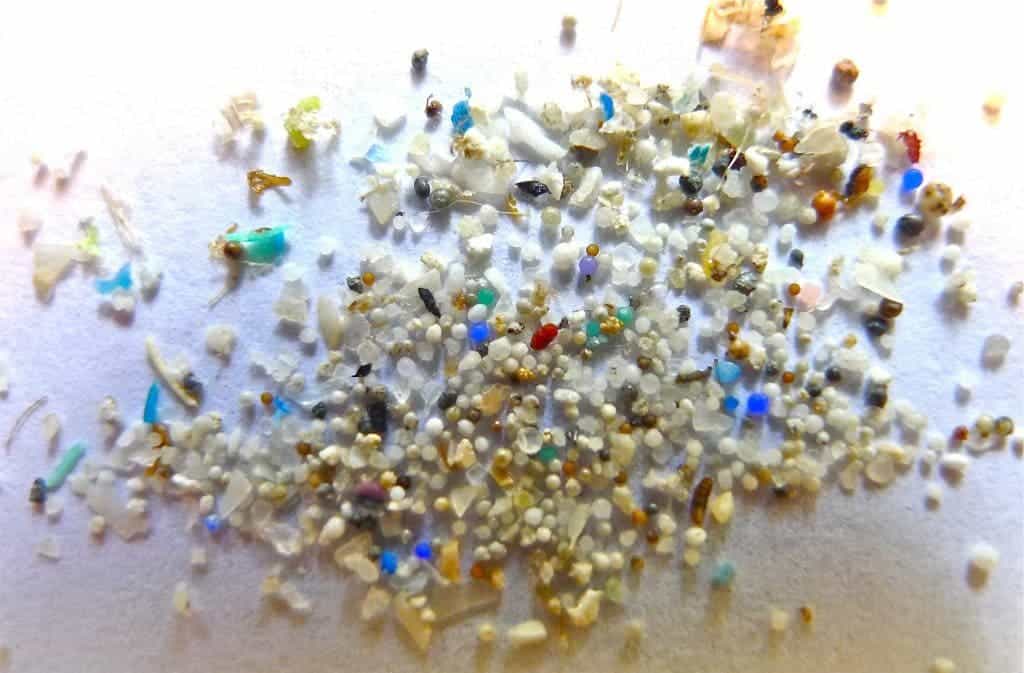
The Field Museum made news recently, as it published findings from its unique library. The library, described sometimes as a bunker, an underground warehouse, or even a “library of life on Earth”, contains fish specimens preserved in jars. In their latest study, researchers from Loyola University looked at the presence of microplastics in fish.
Tim Hoellein, a professor, and grad student Loren Hou have been examining the timeline of the microplastics buildup in fish, looking to see when and how plastic started accumulating in fish — and what we can expect for the future. Their search was assisted by Caleb McMahan, a marine biologist who specializes in the field of ichthyology (study of fish). The related scientific paper is titled, “A fish tale: a century of museum specimens reveal increasing microplastic concentrations in freshwater fish,” and it appears in Ecological Applications.
Turns out, organisms’ exposure to plastic was probably happening ever since plastic was invented, Hoellein said. However, the concentration has increased at an accelerated pace in the past few decades. According to the press release from the museum, “There were no plastic particles before mid-century, but when plastic manufacturing was industrialized in the 1950s, the concentrations skyrocketed.”
ADVERTISEMENT
Washed out to sea
In searching for plastic in fish, Hou treated the digestive tracts of the fish with hydrogen peroxide. Plastic is resistant to the process, while the tissue is not. Hou described finding plastic pieces too tiny to see with the naked eye, just looking like a yellow stain — so they had to use a microscope to help them see the shape of pieces. A separate technique was also utilized to analyze a sample’s “chemical signature.”
Hou and team noted a surprising connection between the plastic they were finding in fish and pieces of clothing. When we think of plastic litter, we think of soda bottles and objects like six-pack can rings. We don’t think of plastics that we wear on our backs. Hou said microplastics can come often from clothing that’s been washed, with little threads breaking off and getting flushed into the water supply.
But this is far from the first study to highlight the problem of plastic in our clothes.
ADVERTISEMENT
In 2011, ecologist Mark Brown published a study (Accumulation of Microplastic on Shorelines Worldwide: Sources and Sinks) that found oceans filled with tiny plastic microfibers that come from clothing. Brown looked at 18 shorelines worldwide, and 85 percent of the sediment along these shores was composed of microfibers. How did that happen? “Laundry,” said the author of the one article, Kate Good.
“Every time a single piece of synthetic clothing is washed, it releases 1,900 plastic microfibers into the water. These microfibers are carried out of your washing machine and diverted to sewage plants or local waterways. The fibers are too small to be filtered out of the water and end up washed out to sea.”
Understandably, researchers are very concerned about this, especially since microplastics can travel and accumulate up the food chain, and easily reach humans. In fact, previous studies found that humans consume around 100,000 microplastic pieces a year, or the equivalent of a credit card every week.
Ingesting fibers that were never intended for edibles? How will that affect one’s health? Cancer? Endocrine disruption? That definitely warrants further study. An article that appeared in The Conversation addressing what research has shown on the topic of fish eating plastic stated that that there is evidence that “microplastics and even smaller particles called nanoplastics can move from a fish’s stomach to its muscle tissue, which is the part that humans typically eat. Our findings highlight the need for studies analyzing how frequently plastics transfer from fish to humans, and their potential effects on the human body,” write Authors Alexandra McInturf, University of California, Davis and Matthew Savoca, Stanford University,
There are several important takeaways. For starters, plastic ingestion by fish seems to be widespread, but it does not seem to be universal. The authors were able to predict “which species were more likely to eat plastic based on their environment, habitat and feeding behavior.” They said “sharks, grouper and tuna that hunt other fishes or marine organisms as food were more likely to ingest plastic.”
Also, the amount of plastic that fish consumed seemed to depend on how much plastic was in their environment. “Species that live in ocean regions known to have a lot of plastic pollution, such as the Mediterranean Sea and the coasts of East Asia, were found with more plastic in their stomachs.” So if we want fish to
The Link LonkJune 07, 2021 at 10:10AM
https://ift.tt/3zblqQK
The world’s fish are swimming in microplastics - ZME Science
https://ift.tt/35JkYuc
Fish
No comments:
Post a Comment